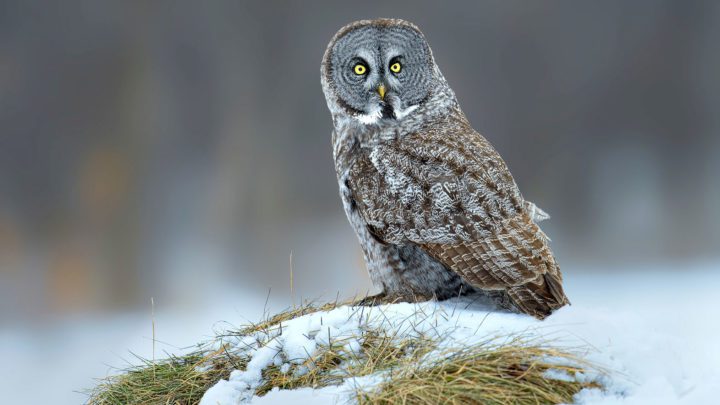How can an owl catch a mouse underneath a foot of snow in total darkness?

Owls do have excellent vision, but one would need either infrared or x-ray vision to see a small mammal under snow. Instead, owls do much of their hunting with the aid of their incredible hearing.
Owl hearing has been most extensively studied in Barn Owls. These pale predators can see very well in low light, but their ears are better. Their hearing is the best of any animal that has ever been tested.
All owls possess extremely sensitive hearing, allowing them to hear low-volume sounds that are relatively far away. But beyond that, many owls also have an uncanny ability to hone in on the exact location of a sound source. Owls with this special ability have an unusual anatomical trait: ears that are positioned asymmetrically on their heads.
In the Barn Owl for example, the external ear canals are offset in two ways. One ear is higher than the other, and one ear is also farther forward on the head than the other. This unusual arrangement helps the Barn Owl locate the source of sounds in three-dimensional space with great precision. Tiny differences in the time it takes for sounds to reach each ear allow the owl to almost instantly zero in on the sound’s precise location. The owl can determine not only the direction of a sound, but its height (i.e. on the ground or in a tree) and distance as well.
Learn more about owls:
- To Catch Voles Under The Snow, Great Gray Owls Must Overcome An Acoustic Mirage
- Check out the species accounts for North American owls on All About Birds to find fun facts and hear the incredible vocalizations of owls.
- Bird Academy’s Wonderful World of Owls, explores the diversity of hundreds of owl species worldwide. Check out a free preview.
- Download a free poster full of fun owl facts with gorgeous color illustrations.

All About Birds
is a free resource
Available for everyone,
funded by donors like you
American Kestrel by Blair Dudeck / Macaulay Library
